Tillandsia ferrisiana
Click thumbnails for full size, scaled to a new window.
Tillandsia ferrisiana
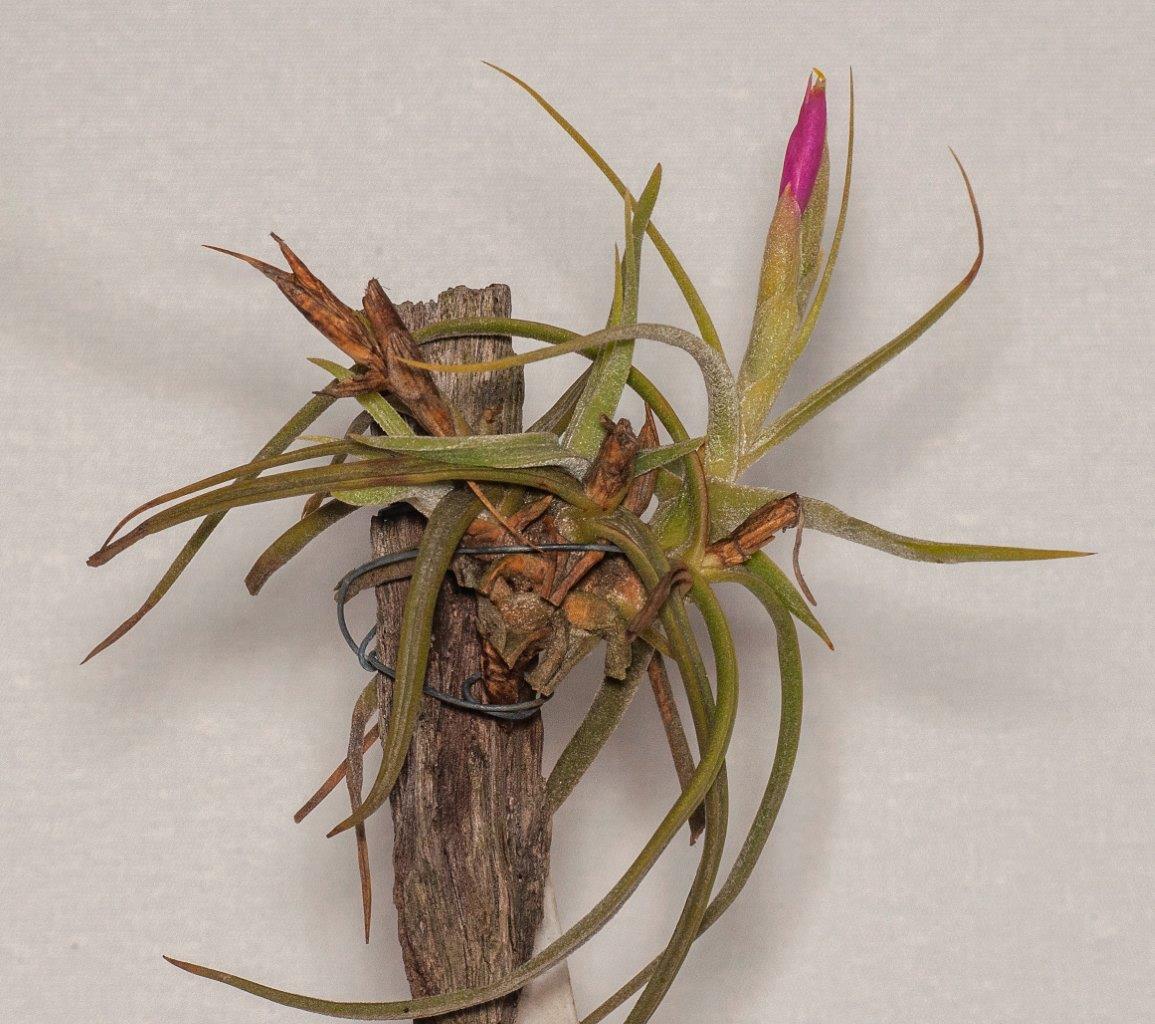
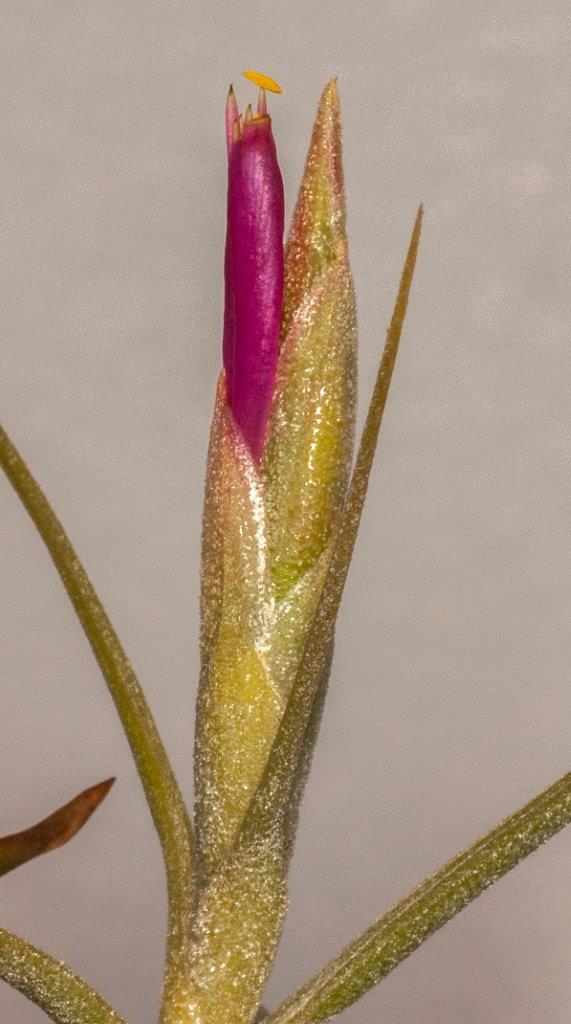 Rob Bower ... "I got this little species from Bob Hudson and was delighted to see it pump out a spike soon after - then dismayed to come out a few days before the flowers emerged to see a large grasshopper sitting astride it. One year later its done its thing again, this time successfully. It seems the flowers remain quite enclosed"
Rob Bower ... "I got this little species from Bob Hudson and was delighted to see it pump out a spike soon after - then dismayed to come out a few days before the flowers emerged to see a large grasshopper sitting astride it. One year later its done its thing again, this time successfully. It seems the flowers remain quite enclosed"
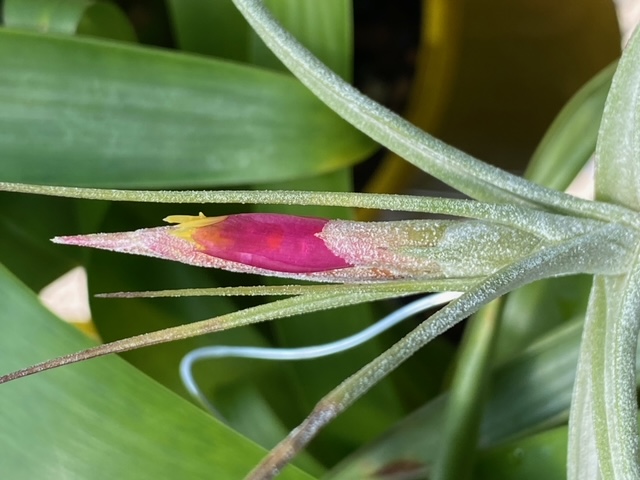
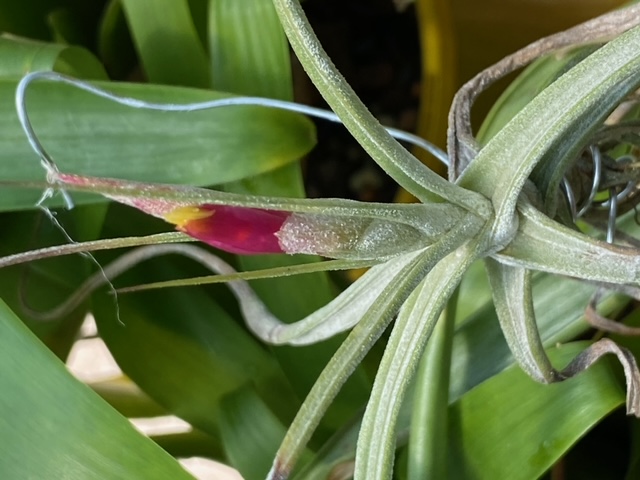
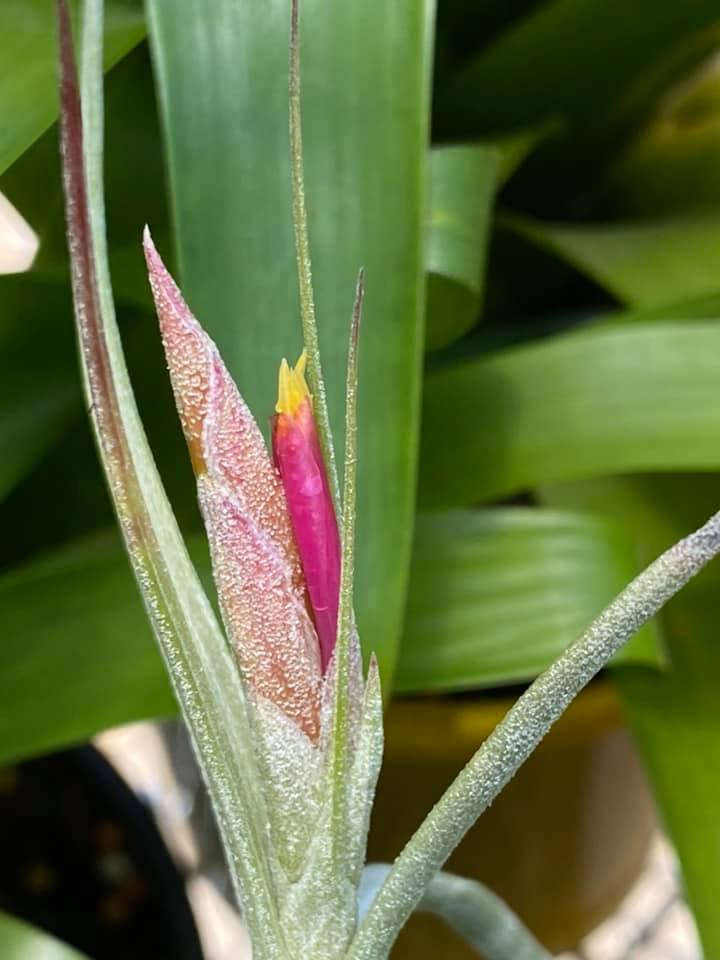
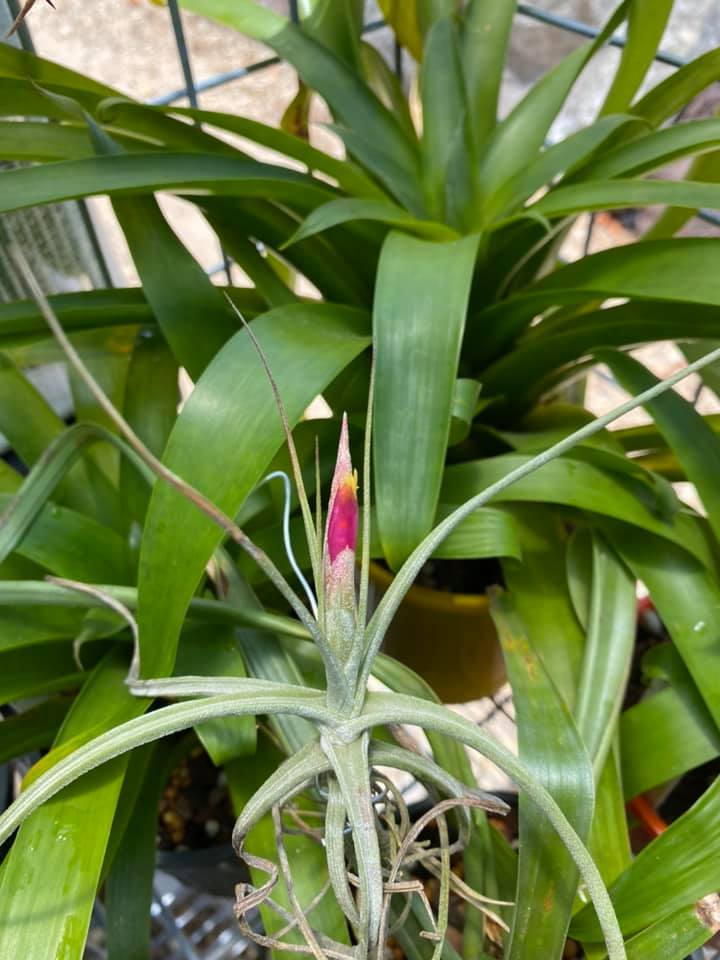
| Dale Dixon 12/20 ex. Bob Hudson |
Dale Dixon ... "Tillandsia ferrisiana (subg. Tillandsia) is an epiphytic species in dry woods and scrub of northwestern Mexico.
The name honours Mrs. Roxana S. Ferris who collected specimens for Stanford University on one of her early expeditions from California to the NW Mexican state of Sinaloa. Her specimens were used by Lyman Smith as the types when describing this species in 1960. Ferris recorded the plants growing on vines in the ‘Monte’, the local name for this type of low scrub in the area.
I’ve had this species for about 10 years now. It has flowered for me before but I’ve always missed it. It is slow growing and looks somewhat like a depauperate Tillandsia schiedeana. The leaves are extremely wiry-hard and will snap if bent too much. I grow this species suspended on aluminium craft wire and hung high in the Till House to receive maximum light and airflow. My plants also get full late afternoon sun."
Tillandsia ferrisiana L. B. Smith, Bromel. Soc. Bull. 10: 92. figs. 1960. Emend Rauh
Desc from S&D p1016 Rauh’s additions in brackets
Plants growing in dense masses;
stem 2-6 cm(-10 cm) long, simple or few-branched.
Leaves densely polystichous, to 15 cm long, much exceeding the inflorescence, densely subappressed-lepidote with cinereous scales;
Sheaths suborbicular, ca 1 cm long, glabrous only where covered;
Blades very narrowly triangular, filiform-attenuate, involute-subulate.
Scape terminal, very short;
Scape-bracts subfoliaceous, densely imbricate.
Inflorescence simple, distichous, dense, 1-2-(3)flowered.(to3cm long)
Floral bracts ovate, apiculate, 20 mm long, covering the sepals, ecarinate, thin, densely cinereous-lepidote;(nerved when dry)
Flowers subsessile.
Sepals elliptic, obtuse, 12 mm long, subcoriaceous, even, appressed-lepidote, becoming glabrous in extreme age, free, the posterior carinate.
Petals (2.8 to 3 cm long, that exceeds the floral bracts by about 2 cm, pale carmine red);
Stamens (and stigma) enclosed
Capsule cylindric, acute, 3 cm long.
Type. Ferris & Mexia 5121-A (holotype DS), Labradas, Sinaloa, Mexico, 18 Sep 1925.
DISTRIBUTION. Epiphytic, dry woods and scrub, northwestern Mexico.
MEXICO. BAJA CALIFORNIA: West side of Cape Region mountains, near Rancho San Vicente, Distrito del Sur, 23° 11' N, 110° 01' W, 11 Nov 1955, Carter & Chilaki 360B (UC, US). SINALOA: La Ramada, 1924,
. G. Ortega 5522 (US).
Tillandsia ferrisiana L. B. SMITH emend Rauh
From Trop Subtrop Pflanzenwelt 31 (1979) p11-13
In the "Bromeliad Society Bulletin", Vol. X, 6, 1960, L. B. SMITH describes under the name Tillandsia ferrisiana a new type, that in 1925 R. S. FERRIS and J. MEXIA collected under the number 5121-A near Labrados in the state Sinaloa (North-Mexico) It was found later (1955) also on Baja California near Rancho San Vicente, CARTER and CHISARI, No., 3608, however always without flowering, so that these are not known up to now and a transfer of the type was not made to one of the Tillandsia-sub-genera. L. B. SMITH admittedly put it into the relationship of the widely dispersed in central-Mexico T. schiedeana STEUD., from which it is distinguished through the small scape as well as densely lepidote floral bracts and sepals. Also in the Flora Neotropica, 14, II (Tillandsioideae) is made no further statements under flowering. In May 1979 on our trip into the Cactus country of North-Mexico (Chihuahua, Sonora and Sinaloa) in a dry coastal area (Mesquite -) south and north of the city of Mazatlan we collected flowering plants of Tillandsia ferrisiana L. B. SMITH so that the diagnosis can be amended.
Plant on the basis of extensive, basal branching of the single plants forms dense clumps, forming a trunk to 10 cm long;
Leaf loosely spirally arranged with small, stem-enclosing sheath to 15 cm long, upright when young, in the age horizontally sticking out tip bent over, narrowly 3-angular, involute, densely gray lepidote blade;
Scape very short, with few, subfoliate scape bracts;
Inflorescence approximately 3 cm long, simple, terete, 2-3-flowering;
Floral bract oval-acuminate, ca 2 cm long, ecarinate, densely gray-lepidote, when dried nerved mostly at the top,
Flowers 2.8 to 3 cm long, that exceeds the floral bracts by about 2 cm, pale carmine red;
Petals a little unfurled at the tip;
Stamens and stigma enclosed
Habitat: dry-forest with Mazatlan, (approximately 50 m above sea level); Collection No. Rauh 50 444 (June 1979).
Despite the similar habitat to T. schiedeana, T. ferrisiana is classified under the sub-genus Allardtia, whereas T. schiedeana with its yellow flowers and protruding stamens is in the sub-genus Tillandsia.
T. ferrisiana grows in the dry country north of Mazatlan with T. circinnata SCHLECHT, T. exserta FERNALD, and a very small form of T. caput-medusae E. MORREN, and until now was a relatively small, indeterminable Tillandsia for lack of flowering.
Despite what Rauh said this taxon is still treated as subgenus Tillandsia where stamens are exserted. See Gardner in Selbyana 9: 130-146. 1986
Updated 04/12/20





